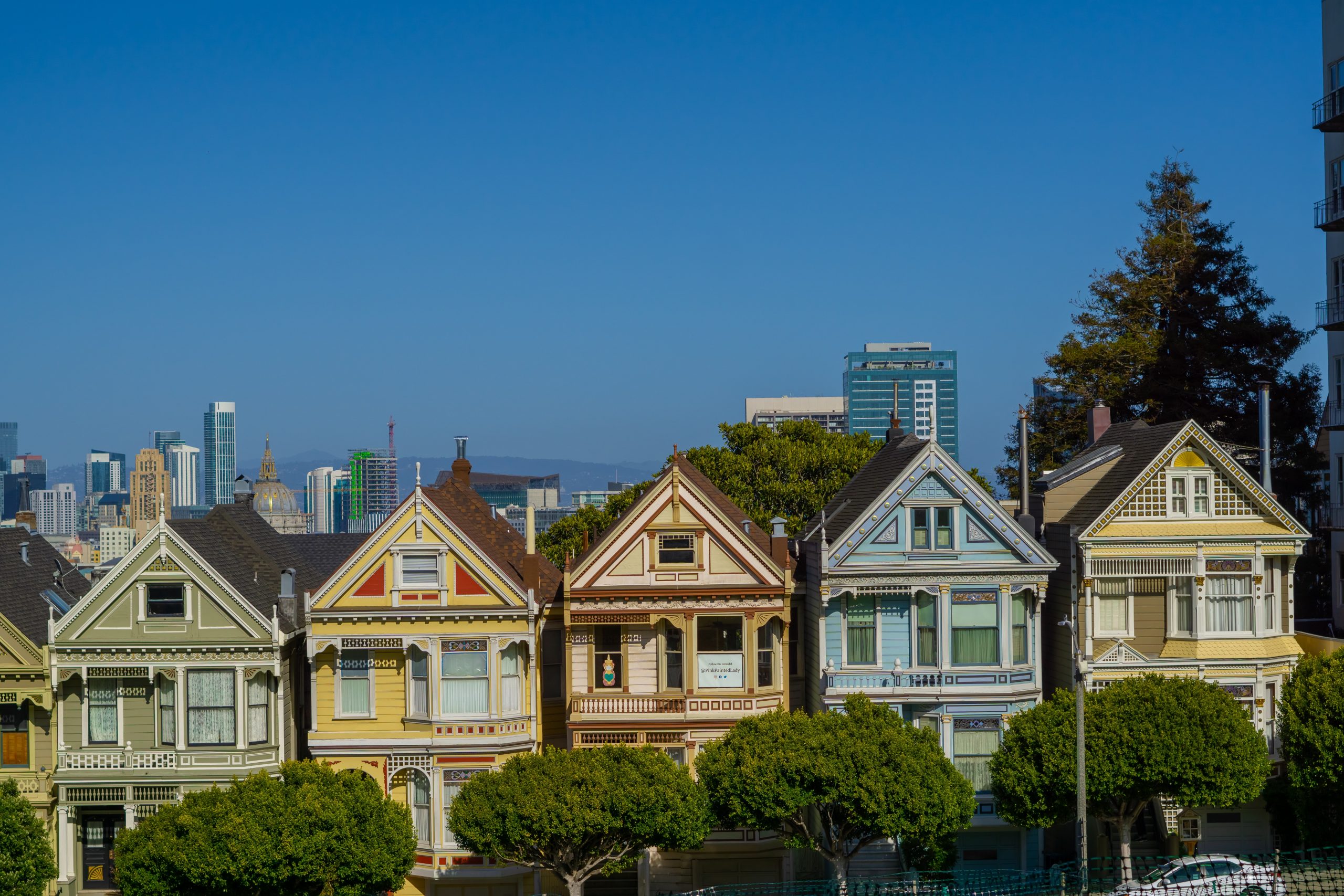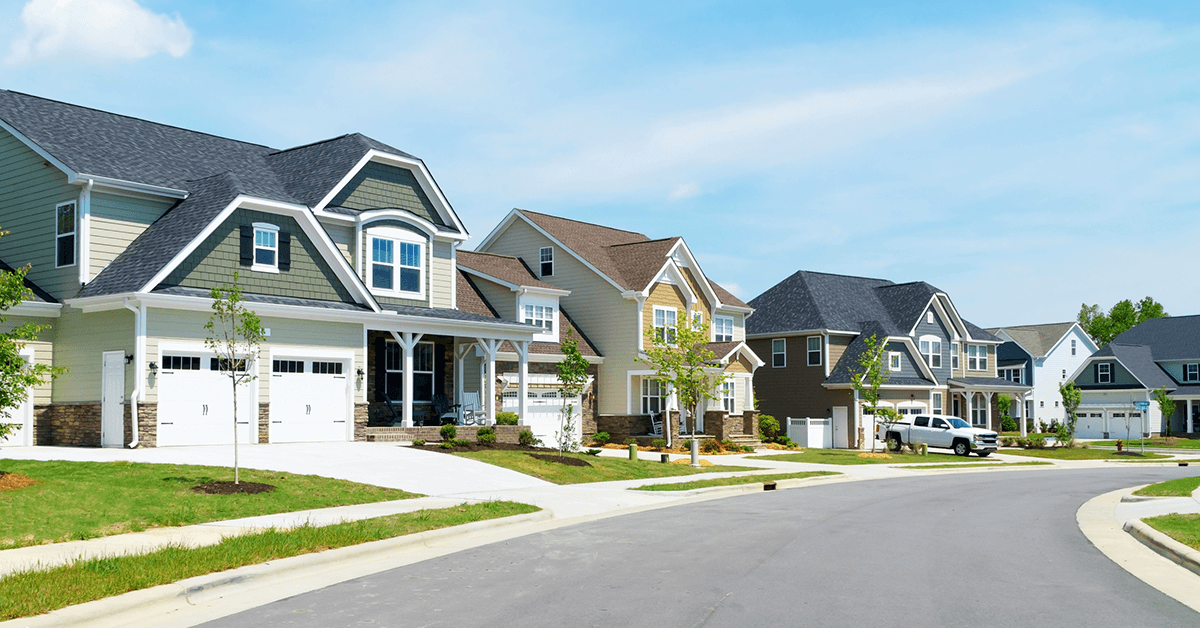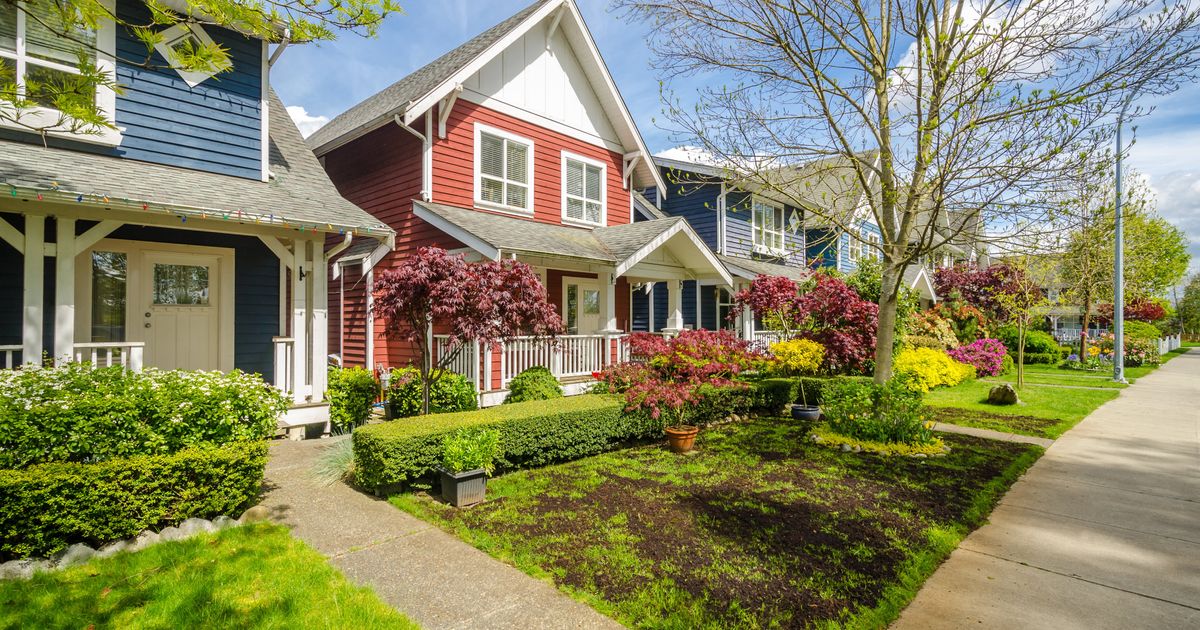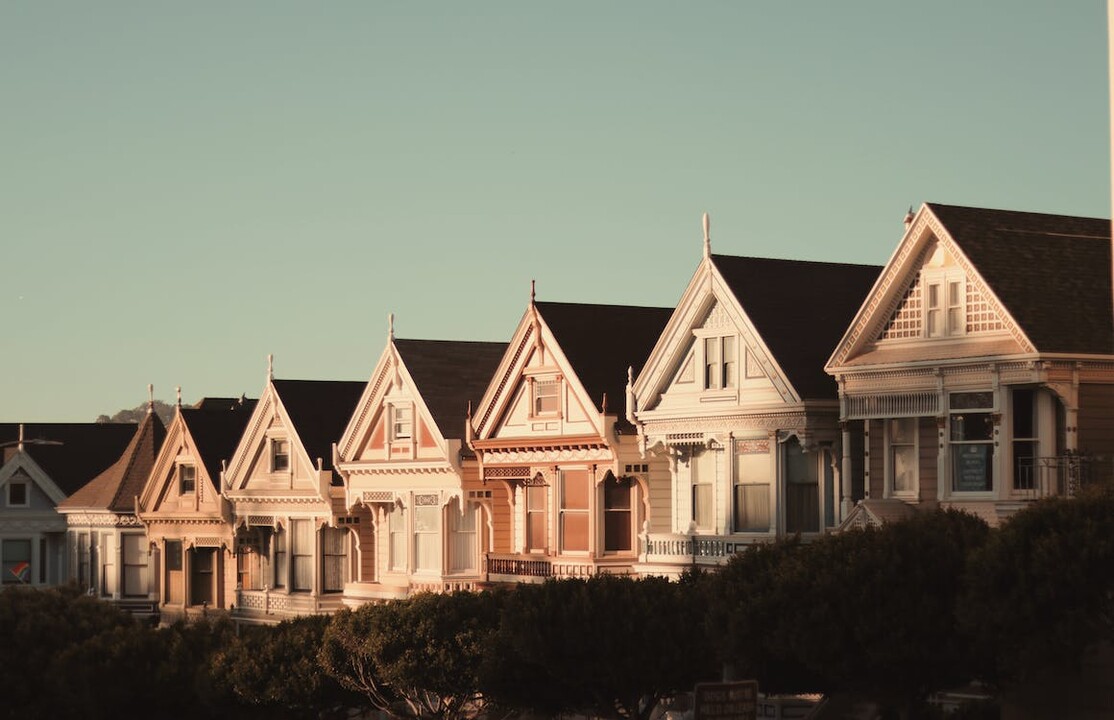Urban Vs. Suburban Real Estate - Which One Is Right For You?
Explore the dynamic choice between urban vs suburban real estate in our comprehensive guide. Delve into the nuances of city living's vibrancy and suburban tranquility, helping you make an informed decision for your ideal home.
Author:Habiba AshtonReviewer:Gordon DickersonJan 05, 20244.5K Shares100.4K Views

In the dynamic landscape of real estate, the choice between urban and suburban living represents a pivotal decision that goes beyond mere brick and mortar. It is a choice that shapes lifestyles, influences daily routines, and defines the very essence of what "home" means to individuals and families.
The dichotomy between the bustling cityscape and the serene suburbs presents a tapestry of opportunities and challenges, each appealing to different sensibilities. In this exploration, we delve into the nuances of urban vs suburban real estate, dissecting the factors that influence this crucial decision-making process. Whether it's the pulsating energy of the city or the tranquility of suburban life, the journey to find the perfect home is a deeply personal and multifaceted one.
What Is An Urban Area?
If you're contemplating an investment in rental property, the choice between an urban or suburban area is crucial. An urban area, nestled in the heart of a city or town, is characterized by a high concentration of buildings, infrastructure, and people. These bustling environments are synonymous with activity, housing a mix of businesses and residential spaces.
Beyond the urban hustle, these areas are vibrant, offering an array of amenities such as shops, parks, and efficient public transportation. It's not just about the infrastructure; urban areas serve as epicenters where communities converge. Here, you'll discover a rich tapestry of services, diverse entertainment options, and cultural activities.
When envisioning popular urban areas in the United States, iconic cities come to mind. From the towering skyline of New York to the cinematic allure of Los Angeles, the historical charm of Philadelphia, the tech hub of San Francisco, and the Midwest's architectural gem, Chicago - these cities exemplify the essence of dynamic urban living. Whether you seek the energetic pulse of city life or the vast investment opportunities, understanding the intricacies of urban areas is key to making informed real estate decisions.
What Is A Suburban Area?
In contrast to the energetic pulse of urban landscapes, a suburban area is situated on the outskirts of the periphery of a large city or town. Distinguished by a noticeable distance from bustling city centers, suburban locales boast more expansive spaces and fewer towering structures compared to their urban counterparts.
Within these suburban havens, houses with ample yards, parks, and a serene ambiance are common features. Suburban living is often synonymous with tranquility, making these areas particularly appealing to families seeking a peaceful and family-friendly environment. Furthermore, suburbs frequently boast well-regarded schools, catering to the educational needs of the community.
In the suburbs, a quieter pace of life prevails, and residents often opt for the convenience of personal vehicles over-reliance on public transportation, distinguishing suburban mobility from the bustling efficiency of urban transit systems. For those who appreciate the harmony of spacious surroundings, a quieter atmosphere, and family-oriented amenities, suburban living stands as an inviting alternative in the realm of real estate choices.
Main Differences Between Urban Vs. Suburban
Investingin urban or suburban real estateis a strategic decision contingent on your investment objectives, target demographic, and marketing preferences. Rigorous market research and a comprehensive examination of the pros and cons are indispensable in making well-informed choices in the real estate market.
Before delving into a detailed exploration of the advantages and disadvantages of each, it's essential to understand the fundamental differences between urban and suburban areas:
- Location -The primary divergence lies in the geographical positioning of urban and suburban areas. Urban landscapes unfold at the heart of cities, immersed in a dynamic tableau of towering buildings and thriving businesses. In contrast, suburban areas extend to the outskirts, providing a quieter, more residential milieu.
- Population Density -Urban areas pulsate with electrifying energy fueled by higher population density. Streets teem with activity as people coexist in a relatively compact space. On the flip side, suburban areas offer a breath of fresh air with lower population density, affording more spacious living environments.
- Cost of Living -The urban lifestyle often carries a heftier price tag, encompassing higher property prices, rent, and overall costs of goods and services. Conversely, suburban areas adopt a more modest stance, presenting a more affordable way of life, complete with accessible housing options.
- Atmosphere -Urban areas thrive on a dynamic, fast-paced atmosphere. Cultural amenities, an extensive selection of dining options, entertainment venues, and a vibrant nightlife contribute to an exciting ambiance. On the contrary, suburban areas exude serenity and a slower pace, with parks, recreational facilities, and a focus on community-centered activities creating a relaxed and family-friendly environment.
- Infrastructure -Urban landscapes showcase towering structures and extensive built-up infrastructure, featuring skyscrapers, well-connected transportation systems, and a high concentration of commercial facilities. Suburban areas strike a balance between residential and commercial development, emphasizing single-family homes, townhouses, and lower-rise buildings.
Pros Of Living In Urban Real Estate
Excitement And Constant Activity
City living is synonymous with a dynamic and lively atmosphere where excitement permeates the air through a myriad of activities and events. From pulsating concerts and vibrant festivals to thought-provoking art exhibitions and captivating theater productions, urban areas never cease to offer engaging and entertaining experiences. In the city, the calendar is a perpetual tapestry of cultural richness, ensuring that there is always something to captivate and inspire residents.
Access To Services And Amenities
An undeniable advantage of urban living is seamless access to a comprehensive array of services and amenities. Within arm's reach, residents find numerous hospitals, shopping centers, restaurants, and entertainment venues, creating a convenient and efficient lifestyle.
Whether one seeks top-notch healthcare facilities or diverse dining options, the city stands as an unparalleled hub where all necessities are easily accessible. Quite often, the walkable nature of urban environments enhances the accessibility quotient, facilitating a more pedestrian-friendly lifestyle.
Opportunities For Young Professionals
Cities emerge as thriving hubs for career opportunities, making them particularly alluring for young professionals. The concentration of businesses, startups, and industries creates fertile ground for networking, career growth, and professional development. The fast-paced rhythm of urban life nurtures innovation and entrepreneurship, providing an environment conducive to carving out successful and dynamic professional paths.
Diversity And Cultural Experiences
Cities are epicenters of diversity, fostering a melting pot of cultures, traditions, and perspectives. This multicultural environment elevates daily life by exposing residents to a tapestry of languages, cuisines, and customs. Museums, art galleries, and cultural events abound, offering ample opportunities to explore various artistic expressions and engage with a myriad of communities.
The richness of cultural experiences in urban areas contributes to a broadened worldview and a more profound appreciation for the tapestry of human expression.
Cons Of Living In Urban Areas
Higher Cost Of Living
Urban living comes at a premium, and the higher cost of living stands out as a significant drawback when compared to suburban alternatives. From soaring rent prices to elevated property values and daily expenses, every facet of city life demands a financial commitment. Negotiating the urban landscape often translates to managing a more challenging budget, making it imperative for residents to carefully weigh the financial implications of their chosen environment.
Potential Crime Rates
City dwellers grapple with the reality of higher crime rates, a downside that sets urban living apart from its suburban counterparts. While acknowledging that crime can occur in any locale, the density of urban populations renders cities more susceptible to certain types of criminal activities. This heightened risk prompts concerns about personal safety, compelling residents to adopt additional precautions in their day-to-day lives.
Noise Levels And Lack Of Privacy
The heartbeat of a bustling city center often echoes in the form of constant noise, presenting a challenge for those seeking tranquility and privacy. The urban symphony, composed of busy streets, honking cars, vibrant nightlife, and densely packed apartment buildings, creates an environment that can be overwhelmingly noisy and lacks the privacy that some individuals desire.
Limited Space And Higher Population Density
The allure of urban living is often accompanied by the compromise of limited space and higher population density. Apartments and houses, scarce commodities in high demand, frequently come with smaller dimensions and elevated price tags. The crowded streets, congested public transportation, and perpetual crowds contribute to a feeling of confinement and overwhelm, challenging the desire for spacious and serene living.
In popular cities, even securing a rental apartment becomes a formidable challenge, underscoring the competitive nature of urban housing markets.
Pros Of Living In Suburban Areas
Tranquility And Safety
The allure of suburban living is anchored in its promise of tranquility and a heightened sense of safety. Nestled amidst quieter streets, less traffic, and a lower population density, suburbs carve out a serene environment that contrasts sharply with the hustle and bustle of urban life. This peaceful atmosphere contributes significantly to an elevated quality of life, fostering a profound sense of security for residents and their families—a cornerstone distinction between the suburban and urban experience.
Lower Cost Of Living
A compelling advantage of suburban living lies in its generally lower cost of living. Housing prices, whether for renting or purchasing a home, tend to be more affordable than their urban counterparts. Suburban neighborhoods cater to diverse budgets, offering a spectrum of options that align with individual financial situations. Beyond housing, daily expenses, including groceries and utilities, often come with a more budget-friendly price tag in the suburbs.
Better Schools And Family-Friendly Environments
Suburban living stands as a magnet for families, driven by the availability of better schools and a family-friendly environment. The commitment to education is palpable, with suburban areas boasting access to highly rated schools—a pivotal consideration for parents choosing a settlement. In addition to educational opportunities, suburban communities prioritize family needs, providing amenities such as parks, playgrounds, and community centers that create a safe and wholesome environment for children to thrive.
More Space And Privacy
Perhaps one of the most distinguishable perks of suburban living is the abundance of space and privacy. Suburban neighborhoods redefine living spaces with larger homes and yards compared to their urban counterparts. This surplus of space allows for a myriad of activities, from gardening to outdoor gatherings, providing residents with the luxury of enjoying their property in diverse ways.
The increased physical distance between houses in suburbs contributes to a heightened sense of privacy, an invaluable feature often elusive in densely populated urban areas.
Cons Of Living In The Suburbs
Longer Commute Times And Less Accessibility
Suburban living, while offering tranquility, comes with the trade-off of longer commute times. Situated farther from city centers, residents often contend with extended journeys to work and other destinations.
The limited availability of public transportation exacerbates this challenge, necessitating private vehicle ownership in many instances. Furthermore, the lack of accessibility to specific amenities, such as cultural events or specialized medical facilities, can pose a hurdle for suburban residents, adding complexity to daily life.
Limited Entertainment And Amenities
While suburbs provide a serene backdrop, the trade-off is often a dearth of the vibrant entertainment scene synonymous with urban areas. Cultural events, theaters, museums, and lively nightlife are typically more limited in suburban locales.
The array of amenities, including high-end restaurants and boutique shops, may be constrained, contributing to a perceived lack of variety and excitement compared to the dynamic offerings of a bustling city.
Lack Of Diversity And Cultural Opportunities
Homogeneity tends to characterize suburban demographics, resulting in a dearth of diversity compared to the multicultural mosaic found in cities. This lack of diversity impacts cultural experiences, culinary options, and exposure to different perspectives. Residents may find it challenging to seek out cultural and artistic events or interact with individuals from diverse backgrounds, potentially limiting personal growth and understanding of various cultures.
Potential For Feeling Isolated
The spatial expansiveness of suburbs, while affording tranquility, can inadvertently foster a sense of isolation and a lack of community connection.
By emphasizing individual homes over communal spaces, the suburban lifestyle may lead to less spontaneous social interaction compared to tightly-knit urban neighborhoods. This isolation can manifest as loneliness and a struggle to build social networks, particularly for newcomers or those who thrive in a more vibrant and fast-paced social environment.
Factors To Consider Between Urban And Suburban Real Estate
Deciding between urban and suburban living necessitates a thoughtful examination of various factors that directly impact your lifestyle and priorities. A nuanced understanding of these elements is crucial in selecting the perfect neighborhood for you and your family, ensuring a harmonious blend of comfort and convenience.
- Lifestyle Preferences and Priorities - Harmony with your lifestyle preferences and priorities is paramount in this decision-making process. Reflect on whether you thrive in a fast-paced, dynamic environment replete with cultural events, vibrant nightlife, and diverse amenities - an urban setting. Conversely, if you cherish peace, tranquility, and the warmth of a close-knit community, the suburbs may offer a more suitable backdrop for your life's unfolding chapters.
- Budget and Cost Considerations -Financial considerations wield significant influence when choosing a place to call home. While cities often promise more job opportunities and higher salaries, they come with a higher cost of living. Suburbs, in contrast, generally boast a more budget-friendly environment encompassing housing, transportation, and daily expenses. Evaluate your budget meticulously to discern which option aligns better with your financial aspirations.
- Accessibility to Services and Amenities - The accessibility of essential services and amenities should factor prominently in your decision. Cities flaunt a plethora of options - from hospitals and shopping centers to restaurants and entertainment venues - all within arm's reach. In contrast, suburbs may present limitations, necessitating more extensive travel to fulfill certain needs. Scrutinize the accessibility matrix to ensure your chosen location seamlessly accommodates your daily life requirements.
- Safety and Crime Rates -Safety is a non-negotiable consideration in any living situation. Cities, with their higher population density, often contend with elevated crime rates, whereas suburbs bask in a safer environment with lower crime rates. Delve into crime statistics in potential neighborhoods to align your choice with safety parameters that resonate with your comfort levels.
- Commute Times and Transportation Options -Evaluate the practical aspects of daily life, including commute times and transportation options. Cities boast well-developed public transportation systems, facilitating easy mobility without a car. Suburbs, in contrast, may entail longer commutes and a heavier reliance on private vehicles. Gauge your tolerance for commuting and assess the transportation infrastructure that best aligns with your lifestyle.
- Impact of COVID-19 and Remote Work Trends -The COVID-19 pandemic has reshaped perspectives on urban and suburban living, with a surge in remote work trends. The newfound emphasis on home offices and spacious living has steered many professionals toward suburban or less densely populated city areas. Factor in the potential long-term effects of COVID-19 and the flexibility of remote work as you navigate your decision-making journey.
Why Invest In Urban Real Estate?
In the realm of real estate, opting for an urban zip code holds strategic advantages, particularly if you find yourself in the enviable position of purchasing property. Amidst the dynamic landscape of shifting preferences and the aftermath of global events like COVID-19, several compelling reasons make urban real estate an enticing prospect.
Proximity To Vital Resources
Cities perennially attract residents seeking proximity to essential aspects of daily life. The allure of being close to jobs, amenities, transportation hubs, schools, and medical centers resonates strongly with those who prioritize convenience and accessibility. Urban living epitomizes a connected lifestyle, where the pulse of the city is intertwined with the rhythm of daily routines.
Population Diversity And Cultural Vibrancy
Urban environments thrive on diversity, both in terms of demographics and cultural offerings. The rich tapestry of population diversity creates a dynamic and inclusive atmosphere. Additionally, the availability of arts, culture, and entertainment further enhances the urban experience, providing a plethora of opportunities for residents to engage with various forms of expression and creativity.
Market Opportunities Post-COVID-19
The exodus of residents from large cities due to COVID-19 has created unique market opportunities in urban real estate. As demand waned, real estate values experienced a dip, presenting a potential advantage for strategic investors. For those willing to weather the challenges and uncertainties of this period, lower purchase prices are attainable.
This presents an opportune moment to capitalize on the cyclical nature of the real estate market, with the potential for substantial returns as urban areas regain their appeal.
Long-Term Growth And Resilience
Despite the immediate challenges posed by the pandemic, data and historical trends suggest that urban real estate retains its inherent value and resilience. As the global situation improves, economies rebound, and residents regain confidence in returning to urban centers, real estate prices and demand are anticipated to rebound. Investing with a long-term perspective positions investors to benefit from the enduring growth trajectory of urban real estate.
Why Invest In Suburban Real Estate?
Choosing to invest in suburban real estate unfolds as a strategic move with compelling advantages, driven by evolving market dynamics and changing preferences. The burgeoning demand for suburban homes, amplified by shifting demographics and lifestyle choices, positions this investment avenue as a lucrative and resilient option for discerning investors.
Surging Demand In The Suburbs
The current real estate landscape underscores a pronounced surge in demand for suburban properties, eclipsing that of urban counterparts. Statistical evidence reveals a remarkable 41 percentdecrease in suburban home inventory compared to a year ago, outpacing the 34 percent decrease in urban homes.
This heightened demand is particularly evident in suburban markets adjacent to thriving urban centers, like those outside Austin or Denver, where professionals increasingly relocate for work opportunities.
Long-Term Renters And Stability
Suburban properties offer a distinct advantage in terms of securing long-term renters. Unlike urban dwellers, who may frequently relocate after short-term leases, suburban residents often exhibit a more stable tenure.
Establishing reliable tenants becomes an achievable goal, and investors can explore proposing longer lease periods, such as two years. The allure of lower crime rates, a mix of commercial properties, and community resources further enhances the appeal, attracting renters seeking a secure and well-rounded living experience.
Cost-Effective Initial Investments
Suburban real estate stands out for its cost-effectiveness in terms of the initial investment required. This affordability allows investors to enter the market at a higher echelon, acquiring properties with enhanced amenities and features.
The current market conditions, characterized by a robust sellers' market, present a unique window of opportunity. Investors entering the suburban real estate arena can leverage this trend to their advantage, tapping into a market that shows no signs of cooling off in the foreseeable future.
Attractive Seller's Market
The present landscape positions suburban real estate within the realms of an attractive seller's market. The high demand, coupled with limited inventory, creates an environment where sellers hold a considerable advantage. For those entering the market now, the potential for favorable returns is substantial, aligning with the prevailing trend of robust demand for suburban homes.
People Also Ask
Is Urban Real Estate More Expensive Than Suburban?
Generally, urban real estate tends to be more expensive due to higher demand and limited space, while suburban properties offer more affordability.
What Are The Main Disadvantages Of Living In The Suburbs?
Suburban living may entail longer commutes, limited entertainment options, and a potential sense of isolation due to spread-out neighborhoods.
Are Urban Areas More Prone To Crime Than Suburbs?
Yes, urban areas often experience higher crime rates compared to suburbs, influenced by the higher population density in cities.
How Has The COVID-19 Pandemic Affected Urban Real Estate Values?
The pandemic has led to an outflux from large cities, causing a temporary dip in urban real estate values, and presenting potential investment opportunities.
What Factors Should I Consider When Deciding Between Urban And Suburban Living?
Lifestyle preferences, budget, accessibility to services, safety, and commute times are key factors to consider when choosing between urban and suburban living.
Conclusion
In the perennial debate of urban versus suburban real estate, there is no one-size-fits-all solution. The decision hinges on a myriad of factors, ranging from individual preferences and lifestyle aspirations to practical considerations like commute times and cost of living. As the real estate market continues to evolve, prospective homeowners find themselves at a crossroads, navigating the complexities of these contrasting landscapes.
Ultimately, the quest for the perfect home is an introspective journey—one that requires careful consideration of personal priorities and a clear understanding of the lifestyle one envisions. Whether surrounded by the towering skyscrapers of the urban jungle or the quiet charm of suburban streets, the decision lies not just in the property itself but in the fulfillment of aspirations and the creation of a truly meaningful place to call home.
Jump to
What Is An Urban Area?
What Is A Suburban Area?
Main Differences Between Urban Vs. Suburban
Pros Of Living In Urban Real Estate
Cons Of Living In Urban Areas
Pros Of Living In Suburban Areas
Cons Of Living In The Suburbs
Factors To Consider Between Urban And Suburban Real Estate
Why Invest In Urban Real Estate?
Why Invest In Suburban Real Estate?
People Also Ask
Conclusion

Habiba Ashton
Author

Gordon Dickerson
Reviewer
Latest Articles
Popular Articles



